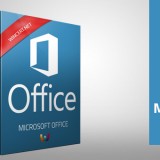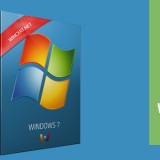How to Protect an App Idea: Essential Tips & Advice
Want to develop your app but afraid that someone steals it? In this article, we will tell you how to protect your app idea from being copied!
If you are planning or have already started developing your own product, you should know exactly how to copyright an app idea and protect it from being stolen.
Some people believe that an idea is worthless until it is implemented.
But I have to disappoint them because, in reality, everything is a little different. Without a clear and well-thought-out protection strategy, someone can not only copy the idea but also launch the finished application faster than you.
If you have a great concept, but you don’t know how to protect it. This post lists some tips and tricks on how to protect your app idea from being copied.

Main Advice on How to Protect an App Idea
We believe that it is best to use all the preventive methods available and learn how to protect an app idea before it is stolen, so we suggest that you pay attention to these methods.
Do Not Spread Your App Idea
The fewer people know about your idea, the better for you. If your application is under development and you only need two people who know about it and help you, you do not need to devote anyone else. Everyone will already know about it when you release it.
Select Trustworthy Partners
Now let’s talk about partners.
It is clear that you can’t develop and release an app alone – unless you combine a developer, a marketer, and many more professional skills.
Let’s take the service that allows you to buy Bitcoin with PayPal as an example – this is a complex project. And the more complex the project is, the more partners you will need. The best thing you can do is to work with people you trust completely.
If you work with a company that develops a custom application, then you should be confident that this team is experienced and all the clients are satisfied with the result.
Key 7 Steps on How to Protect an App Idea
We talked about the simplest rules on how to protect your app idea from being copied that you should use from the very beginning. Now let’s take a look at mobile app copyright or patent and all the other preventive methods step by step.
1. How to Сopyright an App Idea?
There are several legal ways on how to protect an app idea. They are different in terms of labor costs, financial costs, and efficiency. They can be used both individually and in combination with each other.
Protection for the IT sphere is based on the following three actions:
- Trademark registration
- Obtaining a patent for a software
- Source code or design copyright
2. Consider Patenting Your App Idea
The first thing that comes to mind is to patent the results of your work in order to legally protect the app idea from being copied.
How to patent an app idea?
You cannot formally patent an object such as an application. However, you can protect what it is made of: interface, code, design, music, and other details. The more objects you patent, the better the protection will be.
3. Sign Non-Disclosure & Non-Compete Agreements
Signing a Non-Disclosure Agreement guarantees some degree of security of your data while sharing it with your partners. The NDA is an official document that contains all the conditions for the exchange of data, who and to what extent is responsible for its security, how the data can be used, and other obligations.
A Non-Compete Agreement is an agreement that obliges the contractor, within a specified period after the completion of the project, not to become your competitor and not to carry out similar projects for others.
4. Start with App Development
To start protecting your app idea, it is actually necessary to start with its implementation.
For this task, it is vital to find a reliable software development company that has high development standards for adequate money.
For example, agencies like MLSDev that provide IT services in a remote, ensure that the client’s ideas are safe and sign NDA and reject to work with new requests if the app idea is similar to the one the team is working on.

5. Think About Your App Name
A clear and understandable name will not protect you from theft, but it will help you to be remembered by your clients. The name should show a sense of your service and stand out. A good example is the crypto platform Safetrading that reviews cryptocurrency trading services.
6. Put Trademark on App Idea
This step allows you to restrict your competitors from using the logo or its elements. Plus, you can trademark a specific functionality or unique service in your application.
How to trademark an app? This is not the easiest way, but it can help protect against direct copying. In addition, a trademark provides additional protection in various legal issues and litigation.
7. Document Every Step
When developing and releasing an application, forget about verbal agreements. Everything should be documented – design, name, logo, development, marketing, and so on.
Also, don’t forget about the agreements we talked about above.
Why it is Necessary to Protect an App Idea: Use Cases
Almost every successful application has its own copy, and more often than not, even one. Let’s take a look at the most replicated services.
Instagram and Snapchat
It’s not a secret for anyone that the stories initially appeared on Snapchat, being its unique functionality. Instagram has introduced this feature later.
Uber
The successful business model of this application has not only been copied thousands of times but also applied and used in many other services.
Flappy Bird
Flappy Bird’s success has prompted thousands of developers to create similar games. And the fact that the creator of the original game removed their app from the store made the clones of this game even more popular.
Yo Messenger
The developers were shocked when they learned that the Yolo clone app was stealing many of their users. Also, there are other copies like YoFrom, AHOY, Hodor!, etc.
How to Protect Your App Idea from being Copied
How to pitch an idea without it being stolen?
The best way to protect your app from being copied is to release it as quickly and professionally as possible. The speed and quality of implementation will play a decisive role.
Therefore, even if the idea was released to the market as a product that turned out to be “raw” and unfinished, there is no need to be upset – teams that adequately assess their competencies and risks are more likely to survive in the competition.
All in all, note that Facebook is not the first social network as well as the iPhone is not the first smartphone. To be first does mean to be the best.
Disclaimer: This is a sponsored article.













